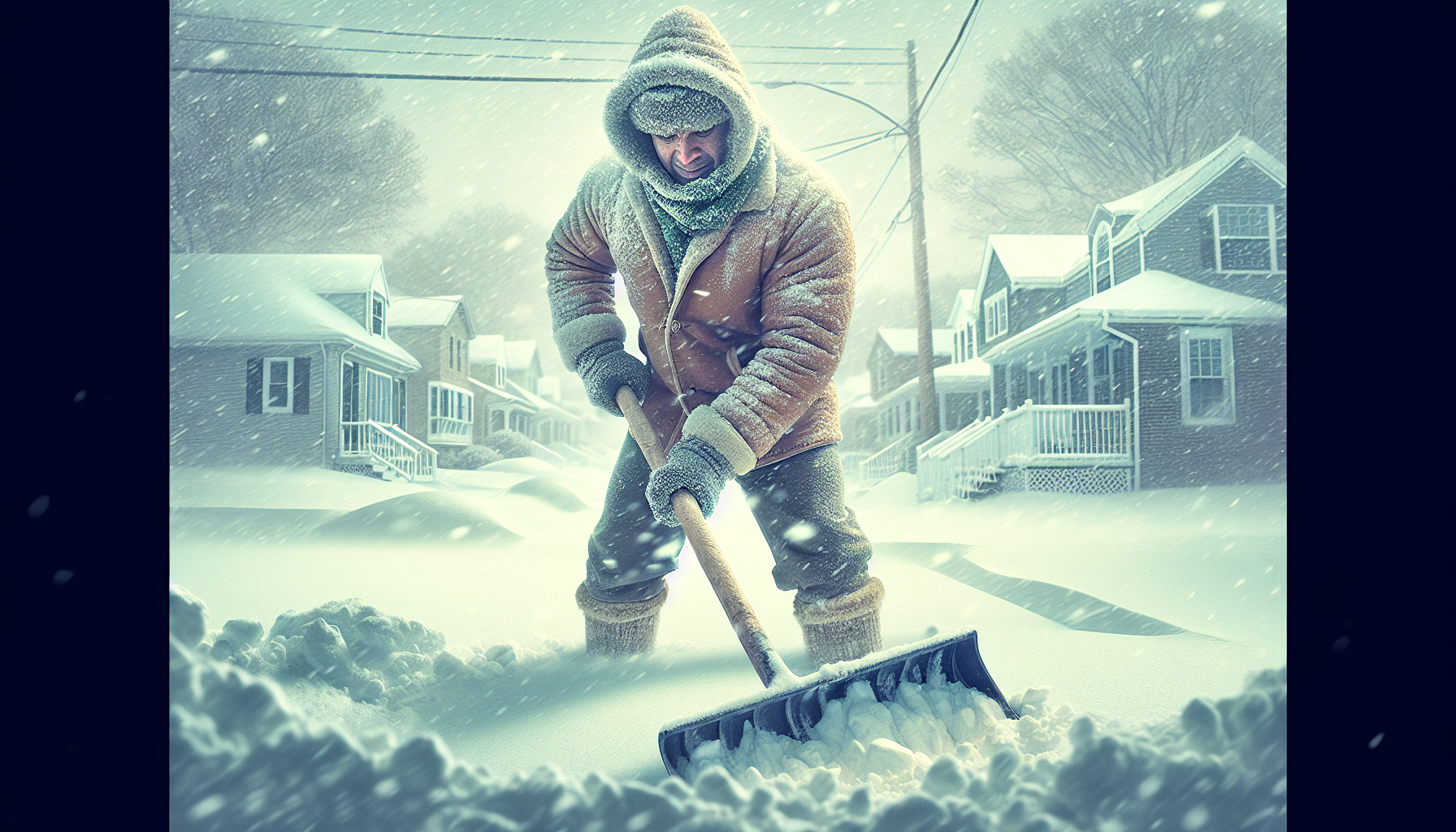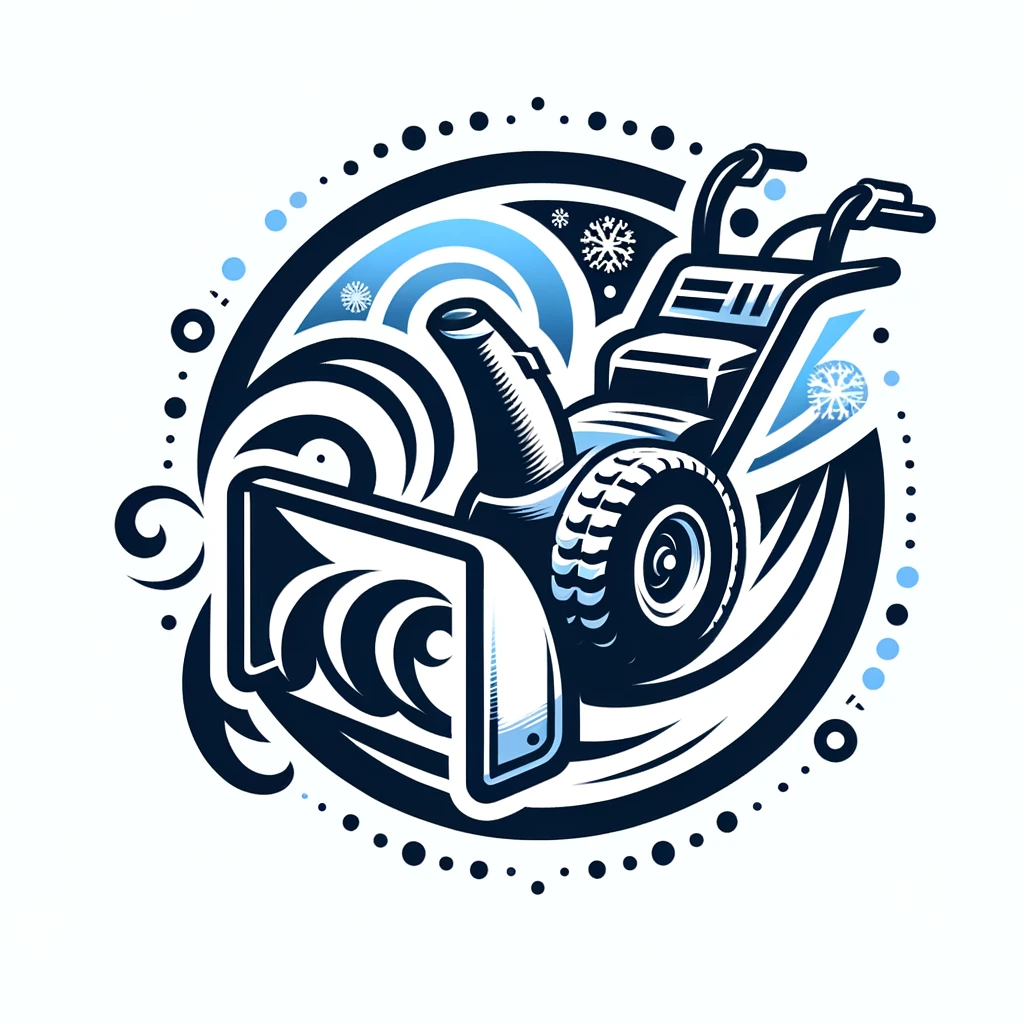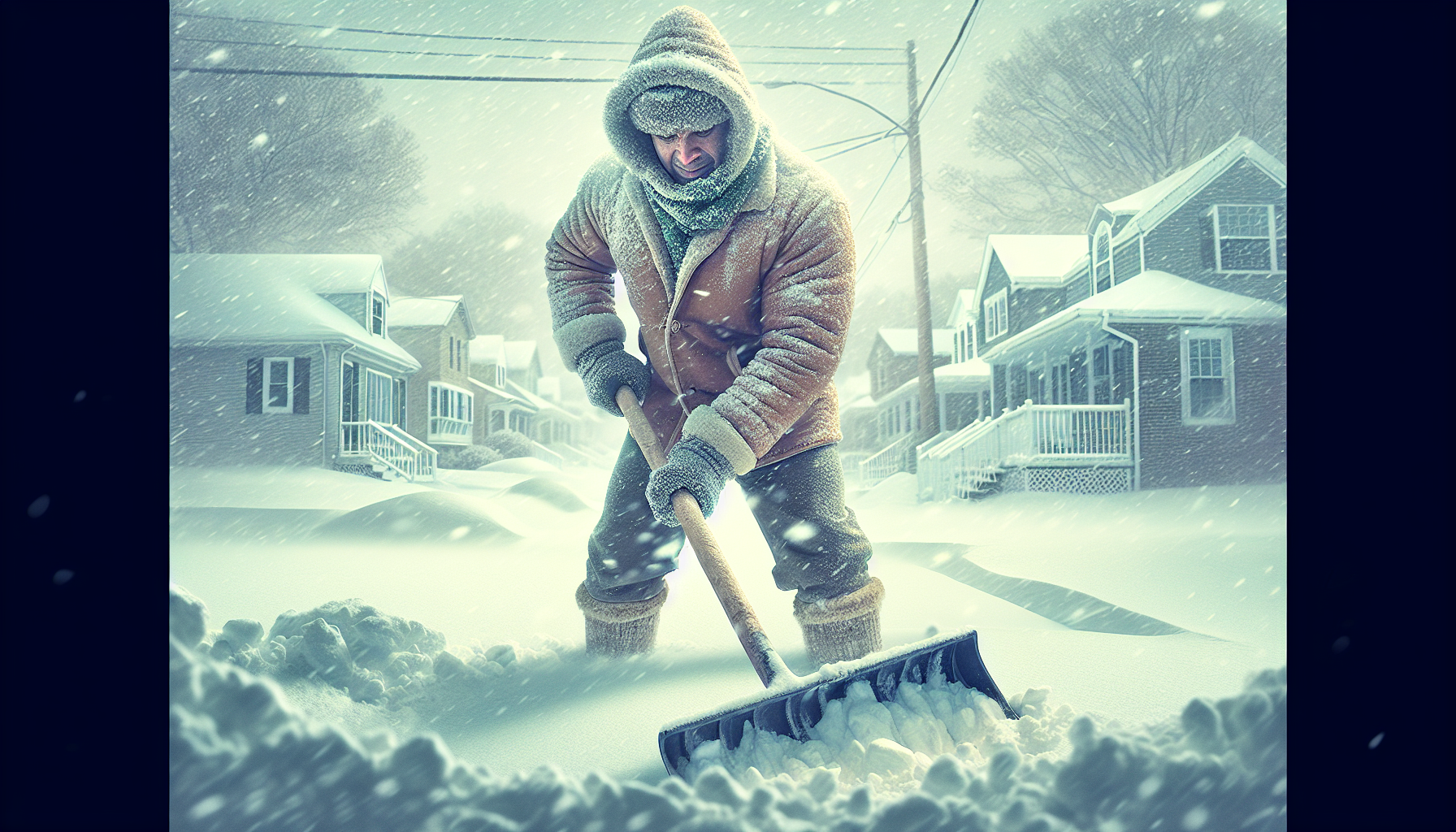You know that feeling when you step outside on a winter morning to a blanket of glistening snow? The air crisp and cold, the world transformed into a winter wonderland. But then reality strikes and you realize that the snow also means one thing – shoveling. Ah, the dreaded task that comes with the beauty of winter. But have you ever stopped to ponder what shoveling snow truly means? Is it just a chore, or is there something more profound hidden beneath the layers of snowflakes? In this article, we will explore the deeper meaning behind the act of shoveling snow and uncover the secrets that lie within this seemingly mundane task.

The Importance of Shoveling Snow
Shoveling snow may seem like a tedious chore, but it serves an essential purpose in maintaining a safe and functional environment during the winter months. Whether you live in an area with heavy snowfall or occasional flurries, taking the time to clear away snow can have significant benefits for both individuals and the community as a whole. In this article, we will explore the purpose, benefits, and risks associated with shoveling snow, as well as provide guidance on when and where to shovel, the necessary tools and equipment, proper techniques, injury prevention, alternative methods, environmental considerations, community efforts, and even the fitness benefits of snow shoveling.
The purpose of shoveling snow
The primary purpose of shoveling snow is to ensure the safety and accessibility of outdoor spaces. Accumulated snow can create slippery and hazardous surfaces, increasing the risk of slips, falls, and injuries. By removing the snow, you create a safer environment for yourself, your family, and your community. Additionally, clearing pathways, driveways, and sidewalks allows for easier access to homes, businesses, and public spaces, ensuring that daily activities can continue unhindered, even in snowy conditions.
The benefits of shoveling snow
Shoveling snow offers a range of benefits beyond safety and accessibility. Firstly, it serves as a form of exercise, helping you stay active during the winter months. Shoveling is a full-body workout that engages muscles in the arms, legs, and core, providing an opportunity for cardiovascular exercise and strengthening. This physical activity can help burn calories, improve cardiovascular health, and boost overall fitness.
Secondly, shoveling snow can be a great way to connect with your community. Engaging in snow removal efforts can foster a sense of camaraderie and neighborly spirit as you work together to clear shared spaces. It provides an opportunity to interact with your neighbors and strengthen community bonds. Additionally, by clearing snow from public spaces, you contribute to the collective well-being and mobility of others, especially those who may have difficulty navigating through snow-covered areas.
The risks of not shoveling snow
Choosing not to shovel snow can have serious consequences, both for individuals and the community. The most apparent risk is the increased likelihood of accidents and injuries. Slippery surfaces can lead to falls, resulting in fractures, sprains, or even head injuries. Not shoveling snow can impede emergency personnel, making it challenging for them to respond quickly in case of emergencies. It can also hinder the delivery of essential services, such as mail or garbage collection, causing disruptions in daily life. Neglecting snow removal responsibilities can also lead to fines and penalties in areas where shoveling is mandated by local ordinances. Overall, the risks of not shoveling snow far outweigh the temporary inconvenience and effort required to clear it.
When and Where to Shovel Snow
Ideal time to shovel snow
Choosing the right time to shovel snow is crucial for efficiency and effectiveness. While it may be tempting to wait until the snowfall has completed, doing so can make the task more challenging, especially if the snow compacts or freezes over time. It is generally recommended to begin shoveling as soon as there is a reasonable accumulation of snow. By promptly removing snow, you can prevent it from turning into ice or becoming too heavy to lift, making the job more manageable and reducing the risk of injuries.
Areas to prioritize for snow removal
When shoveling snow, it is essential to prioritize certain areas to ensure safety and accessibility. Start by clearing walkways, entrances, and pathways that lead to your home or business. These areas should be cleared wide enough for safe passage and should be regularly maintained to prevent ice formation. Driveways and parking areas should also be a priority, as they need to be accessible for vehicles. Additionally, consider clearing fire hydrants, mailboxes, and other essential infrastructure to facilitate emergency services and prevent disruptions to essential services.
Shoveling techniques for different surfaces
Different surfaces require specific shoveling techniques to prevent damage and maximize efficiency. For concrete or paved surfaces, such as sidewalks or driveways, opt for a sturdy shovel with a flat blade so you can scrape the snow without scratching the surface. Begin by pushing as much snow as possible to the sides, then lift and toss the remaining snow. When shoveling on delicate surfaces like wooden decks or fragile landscapes, use a plastic shovel or a shovel with a rubber edge to minimize damage. Take extra care to avoid scraping or gouging the surface while removing the snow.
Tools and Equipment for Shoveling Snow
Types of shovels for snow removal
Choosing the right shovel is essential for efficient and effective snow removal. There are several types of shovels specifically designed for this purpose. A traditional snow shovel typically has a curved or flat blade with a long handle, allowing you to push and lift snow. These shovels are versatile and suitable for most snow removal tasks. Ergonomic shovels feature a bent or curved handle, reducing strain on your back and wrists. They are particularly beneficial for individuals with pre-existing back or joint issues. Additionally, there are specialized shovels, such as snow pushers, which are ideal for pushing large amounts of snow and clearing wide areas quickly. Consider your specific needs and preferences when choosing a shovel, keeping in mind factors such as handle length, weight, and blade design.
Additional equipment for efficient snow removal
In addition to a shovel, there are several other tools and equipment that can enhance your snow removal efforts. A snow blower or snow thrower can be a significant time and energy saver, especially for larger areas or heavy snowfall. These machines use motorized mechanisms to blow or throw snow away, eliminating the need for manual shoveling. Snow blowers come in various sizes and power options, so be sure to select one that suits your needs. Other useful equipment includes ice melt or de-icing agents to prevent ice formation and increase traction, along with a snow push broom or brush for lighter snowfalls or clearing off vehicles. Don’t forget to dress appropriately for the weather, including wearing warm clothing, waterproof gloves, and slip-resistant footwear to stay safe and comfortable while shoveling.
Proper Techniques for Shoveling Snow
Body mechanics and posture while shoveling
Proper body mechanics and posture are crucial for protecting yourself from injuries while shoveling snow. Adopting the right stance and utilizing your body’s strength efficiently can help prevent strains, sprains, and other musculoskeletal issues. When shoveling, stand with your feet hip-width apart, keeping a slight bend in your knees. Maintain a straight back and avoid hunching or rounding your shoulders. Bend from your hips rather than your lower back when lifting snow, using the strength of your legs and core muscles rather than relying solely on your back. Avoid twisting your torso while throwing snow, as this can strain your back or cause muscle imbalances. Instead, pivot your entire body to change direction. Also, remember to take regular breaks and listen to your body’s signals of fatigue or pain.
Tips for safe and effective snow shoveling
To ensure safe and effective snow shoveling, consider the following tips:
-
Warm up: Before starting, perform some light stretching exercises to warm up your muscles and increase flexibility.
-
Pace yourself: Shoveling can be physically demanding, so take breaks as needed and avoid overexertion. If you have a large area to clear, divide it into smaller sections and tackle one at a time.
-
Lift with your legs: When lifting snow, use your leg muscles to power the movement, rather than putting excessive strain on your back. Bend your knees and engage your leg muscles to lift the snow.
-
Push, don’t throw: Whenever possible, push the snow to the sides rather than throwing it. This technique is less strenuous on your body and allows you to cover more ground quickly.
-
Maintain good grip and footing: Wear slip-resistant footwear and pay attention to your footing while shoveling. Use salt or sand to increase traction and prevent slips and falls.
-
Stay hydrated: Even in cold weather, it’s essential to stay hydrated while engaging in physical activity. Drink plenty of water before, during, and after shoveling.
Remember, safety should always be the priority when shoveling snow. If you have any underlying health conditions or concerns about your physical capabilities, it is advisable to consult with a healthcare professional before engaging in intense physical activities like snow shoveling.
Preventing Injuries while Shoveling Snow
Common injuries associated with snow shoveling
Shoveling snow, while necessary, can put strain on your body and lead to various injuries if not done properly. Some common injuries associated with snow shoveling include:
-
Muscular strains and sprains: Lifting heavy loads or using improper lifting techniques can strain your back, shoulders, and other muscles. Twisting movements while throwing snow can also increase the risk of sprains and strains.
-
Overexertion and fatigue: Snow shoveling is a physically demanding task. Overexertion can lead to fatigue, dizziness, shortness of breath, and even heart-related issues in individuals with pre-existing conditions.
-
Slips and falls: Snow-covered surfaces can be slippery, increasing the risk of slips and falls. Falling on icy or uneven surfaces can result in fractures, sprains, or head injuries.
Preventive measures to avoid injuries
To minimize the risk of injuries while shoveling snow, follow these preventive measures:
-
Warm-up and stretch beforehand: Perform light stretching exercises to warm up your muscles and increase flexibility. This can help prevent strains and injuries.
-
Use proper lifting techniques: Lift with your legs, not your back, when lifting snow. Engage your leg muscles and bend your knees to lift the shovel, keeping your back straight.
-
Take regular breaks: Shoveling snow can be physically demanding. Take breaks as needed to rest and avoid overexertion. Hydrate and listen to your body’s signals.
-
Use ergonomically designed shovels: Consider using shovels with ergonomic designs, such as bent handles or adjustable lengths, to reduce strain on your back and joints.
-
Pace yourself and divide the task: Shoveling a large area at once can be exhausting. Divide the task into smaller sections and tackle them one at a time to avoid overexertion.
-
Dress appropriately: Wear layers of warm clothing to protect yourself from the cold. Use waterproof gloves to keep your hands dry and warm. Dress in slip-resistant footwear to maintain stability and avoid falls.
-
Ask for help if needed: If you have a large area or heavy snowfall, consider asking for assistance or hiring professional snow removal services.
By implementing these preventive measures, you can significantly reduce the risk of injuries while shoveling snow.
Alternatives to Shoveling Snow Manually
Snowblowers and their advantages
For those who have large areas to clear or are unable to shovel manually due to physical limitations, snowblowers can be a valuable alternative. Snowblowers, also known as snow throwers, come in various types and sizes, ranging from electric to gas-powered models. These machines use motorized mechanisms to remove snow efficiently. By simply pushing or directing the snowblower, it blows or throws the snow away, saving time and effort. Snowblowers are particularly advantageous for heavy snowfall or when dealing with wet and heavy snow that can be challenging to lift with a shovel. However, it’s important to note that snowblowers may not be suitable for every situation, such as areas with tight spaces or delicate surfaces.
Hiring professional snow removal services
Another alternative to manual snow shoveling is hiring professional snow removal services. Professional snow removal companies have the necessary equipment and expertise to efficiently clear snow from various areas. This option is particularly beneficial for individuals with limited mobility, medical conditions, or those who simply prefer to outsource the task. Professional snow removal services can be tailored to meet specific needs, whether it’s clearing residential driveways, commercial parking lots, or pathways in public spaces. By entrusting the snow removal to professionals, you can save time, avoid physical strain, and ensure thorough and reliable snow removal.
Environmental Considerations in Snow Removal
Eco-friendly options for snow removal
While snow removal is necessary for safety and accessibility, it’s important to consider the environmental impact of the methods and products used. Several eco-friendly options are available that minimize harm to the environment. One option is to use environmentally friendly snow melters or de-icing agents. These products are typically made from biodegradable materials and reduce the need for excessive salt usage. Using eco-friendly alternatives helps prevent damage to plants, grass, and the soil. Additionally, manually removing snow with shovels or brooms, rather than relying solely on motorized equipment, can reduce energy consumption and emissions.
Importance of proper disposal of snow
Proper disposal of snow is crucial to prevent environmental contamination and maintain the integrity of ecosystems. When shoveling or snow blowing, avoid piling the snow in areas where it can drain into bodies of water or ecologically sensitive areas. Snow that contains harmful substances, such as chemicals or pollutants, should not be dumped in storm drains or water sources. Instead, it should be properly disposed of in designated areas, following local guidelines and regulations. By being mindful of where you deposit the snow and avoiding contamination, you contribute to the preservation of the environment.
Community Efforts in Snow Removal
Neighborhood snow clearing initiatives
Snow removal can become a collective effort within a neighborhood through snow clearing initiatives. These initiatives encourage residents to work together in clearing snow from shared spaces, such as sidewalks or common driveways. By coordinating efforts, neighbors can make the task more manageable and efficient. Some neighborhoods organize snow shoveling events or create volunteer groups dedicated to snow removal. These initiatives not only clear the snow but also foster community spirit and promote social connections. Through teamwork and collaboration, neighbors can support one another and ensure the well-being of the entire community during the winter months.
The role of local government in facilitating snow removal
Local governments play a crucial role in facilitating snow removal and ensuring the safety of their communities. They often implement policies, ordinances, and regulations regarding snow shoveling and plowing. Some municipalities provide snow removal services on public roads, sidewalks, and other communal areas. Local governments may also establish snow emergency plans to address severe snowstorms and coordinate efforts with emergency services. In addition, they can educate and inform residents about snow removal responsibilities and the importance of timely and proper snow removal. By working in tandem with local governments, communities can enhance their snow removal efforts and maintain a safe environment for all.
Snow Shoveling as Exercise
Calories burned while shoveling snow
Shoveling snow is more than just a chore; it can be an excellent form of exercise. The physical exertion involved in snow shoveling engages multiple muscle groups and can help burn calories. The number of calories burned while shoveling snow varies depending on factors such as body weight, intensity of activity, and the duration of shoveling. On average, a person weighing 150 pounds can burn around 400-500 calories per hour of shoveling snow. This calorie burn is comparable to activities like brisk walking or cycling. By incorporating snow shoveling into your winter routine, you can achieve your fitness goals while accomplishing necessary outdoor tasks.
Health benefits of snow shoveling
In addition to burning calories, snow shoveling offers several health benefits. It is a full-body workout that engages muscles in the arms, shoulders, legs, and core. The repetitive motions involved in shoveling can help improve muscular endurance and strength. The cardiovascular demands of shoveling snow increase heart rate and promote cardiovascular health. Regular physical activity like snow shoveling can also contribute to weight management, improve joint flexibility, and release endorphins, leading to enhanced mental well-being. However, it’s important to ensure you practice proper technique and listen to your body’s limits to avoid strain or injury.
Conclusion
Shoveling snow may be seen as a mundane task, but its importance cannot be overstated. By understanding the purpose, benefits, and risks associated with snow removal, you can approach this winter chore with a renewed perspective. When and where to shovel snow, the tools and techniques to use, injury prevention measures, and alternative methods all play a role in creating a safe and accessible environment. Additionally, considering the impact on the environment, the role of community efforts, and the fitness benefits of snow shoveling adds depth to this seemingly simple task. So, the next time you grab your shovel, remember that you are not only clearing snow but also contributing to the well-being of yourself, your community, and the environment.


